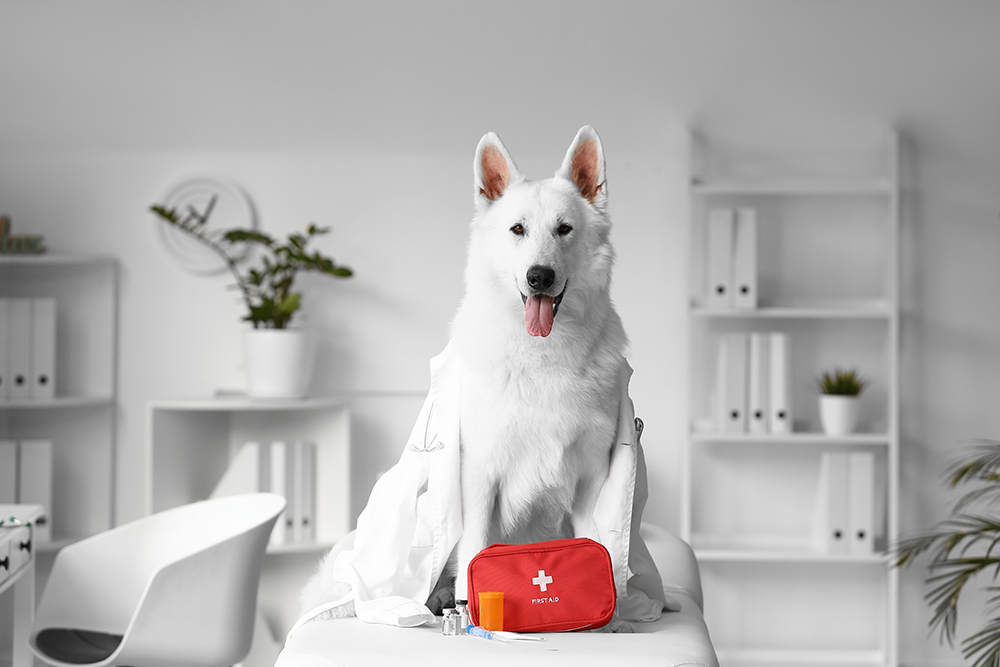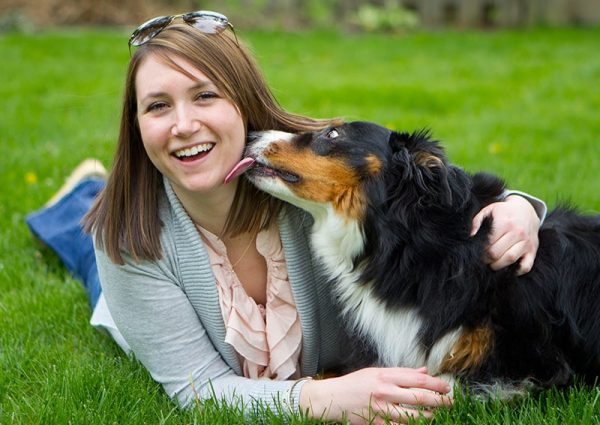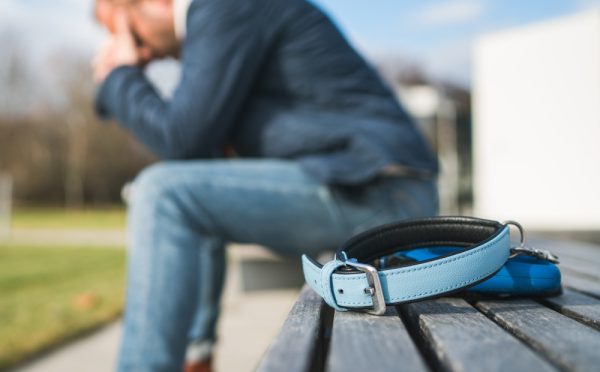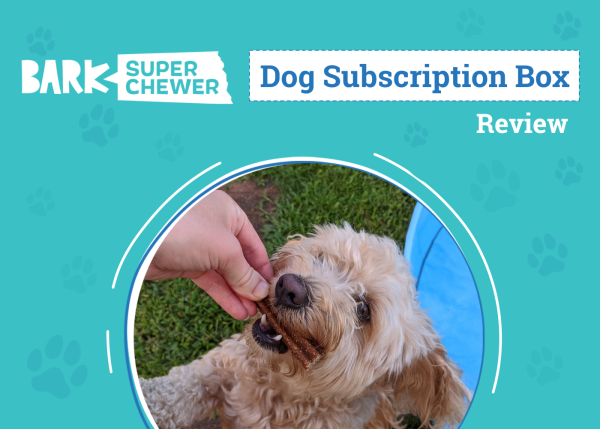Whether you’re hanging out at home with your dog or taking them for a walk, an emergency situation is always a possibility, so having a first-aid kit on hand can be crucial to ensuring your dog’s safety. We compiled a list of essential items to include in your own DIY first-aid kit.
When choosing supplies, be sure to consider your dog’s specific needs. For example, if your dog is a senior or a working dog, you’ll require different items. Once you’ve assembled your kit, it’s recommended that you keep it with you at all times.

The 20 Essential Items for a Dog First-Aid Kit

Bandages and Supplementary Supplies
1. Self-Adhering Bandages
- Our Pick: Andover Healthcare PetFlex Dog Bandage
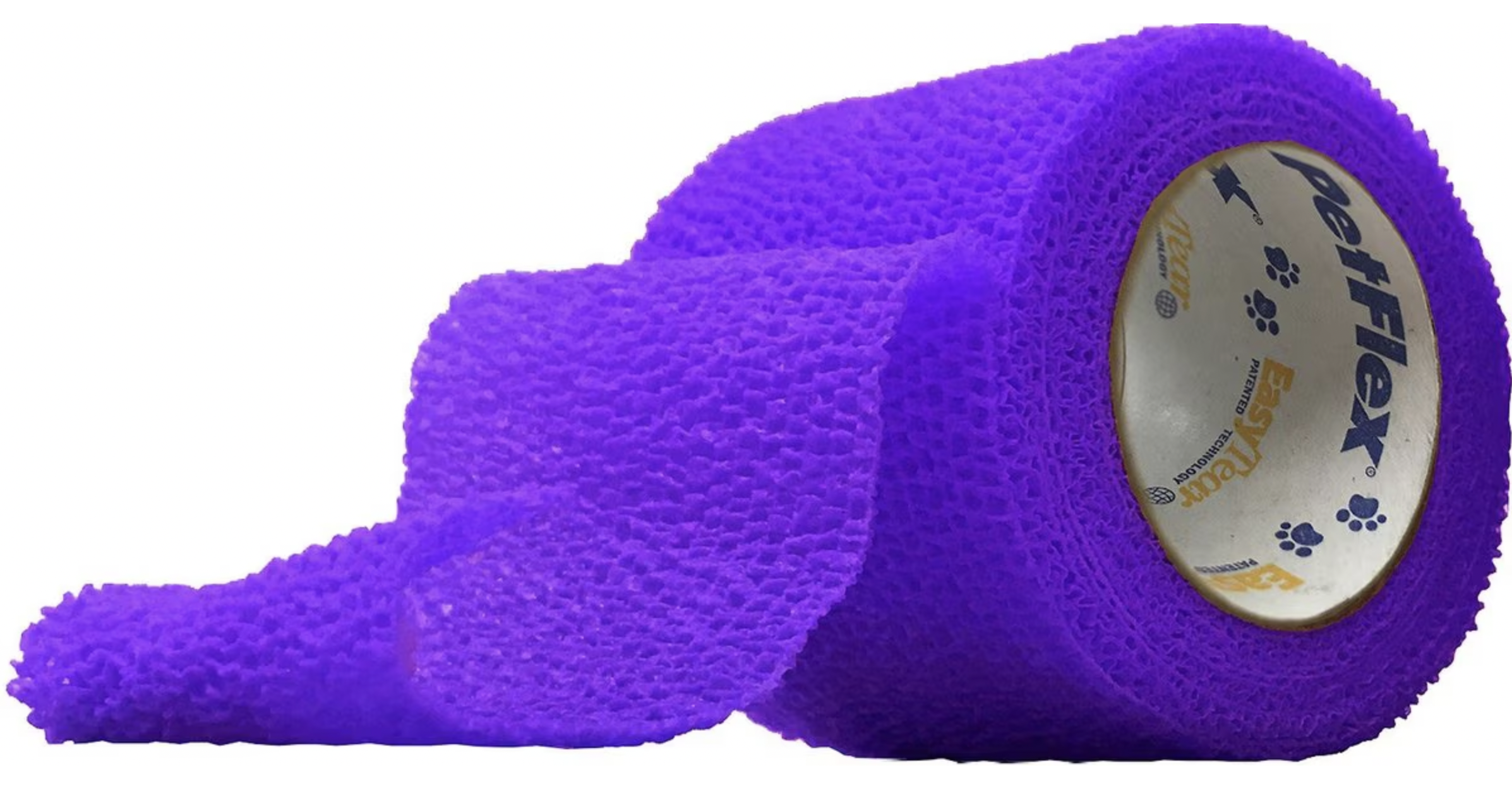
Self-adhering bandages have an elastic quality that enables them to be wrapped around a wound or used as a makeshift muzzle. They’re designed not to stick to your dog’s fur and are resistant to sweat and water, but they’re not waterproof. Bandages come in handy to cover wounds; this helps keep them clean and provides pressure for bleeding wounds.
Once the wound has been tended to (clipped, flushed, and cleaned), it can be covered with dressing and wrapped with self-adhering bandages. These tighten once applied, so before you apply one, stretch out the bandage, and don’t pull it taut while applying. Tight bandages can cut off circulation and cause tissue death. Your first-aid bandage just needs to last until you can get your pet to the vet clinic, so don’t leave it on for more than a few hours.
2. Gauze Pads
- Our Pick: Band-Aid Cushion Care Gauze Pads
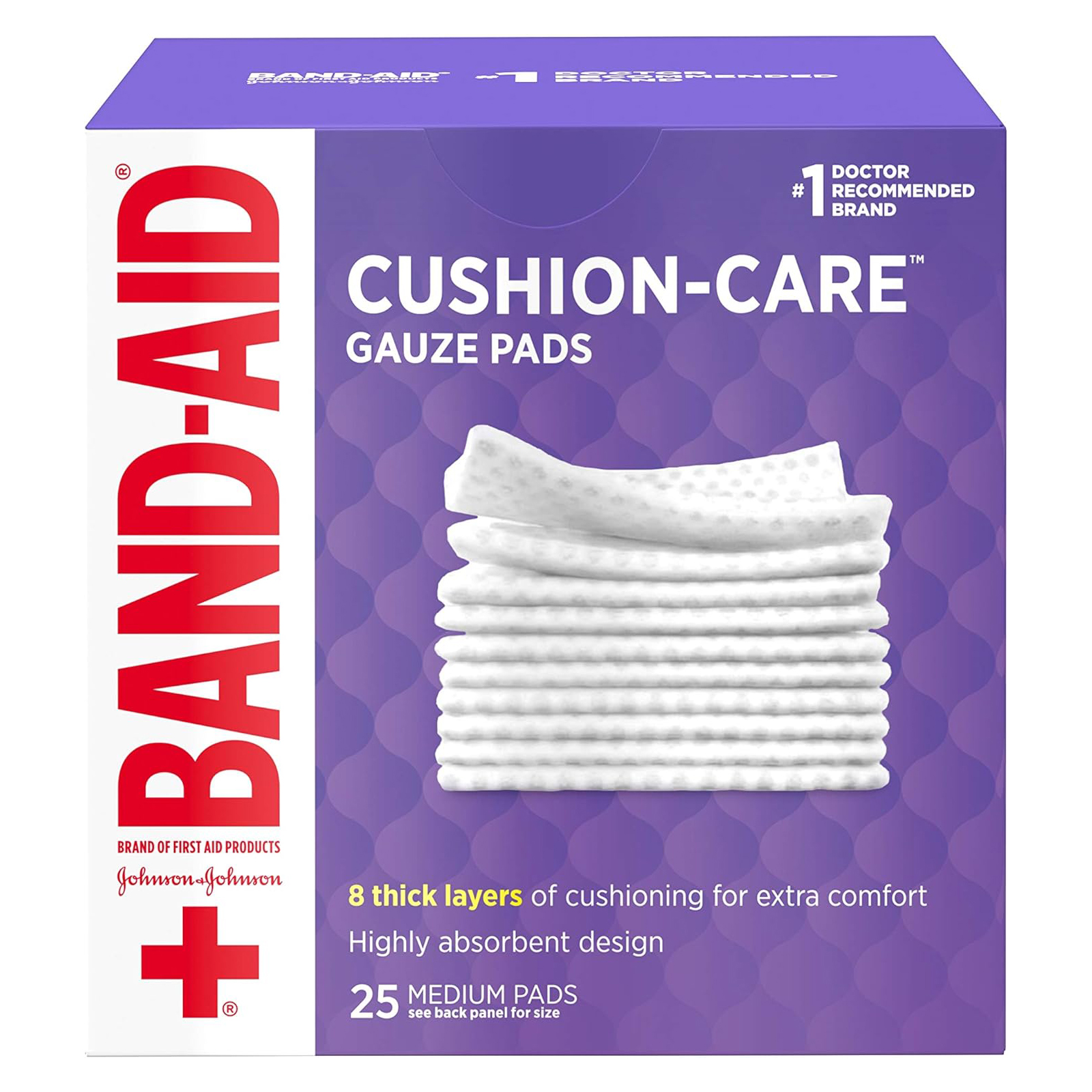
Gauze pads are useful for covering small wounds, and since they are layered, they absorb blood and fluids quite effectively. Using gauze pads can help keep wounds clean, and they are soft, so they won’t cause any unnecessary pain for your dog. These pads are also non-stick, so when the time comes to take them off, they are easy and comfortable to remove. These are meant to be part of a first-aid dressing that only needs to last a few hours at most.

Tools
3. Tweezers
- Our Pick: Acronde 3-Pack Tick Remover Tool Set
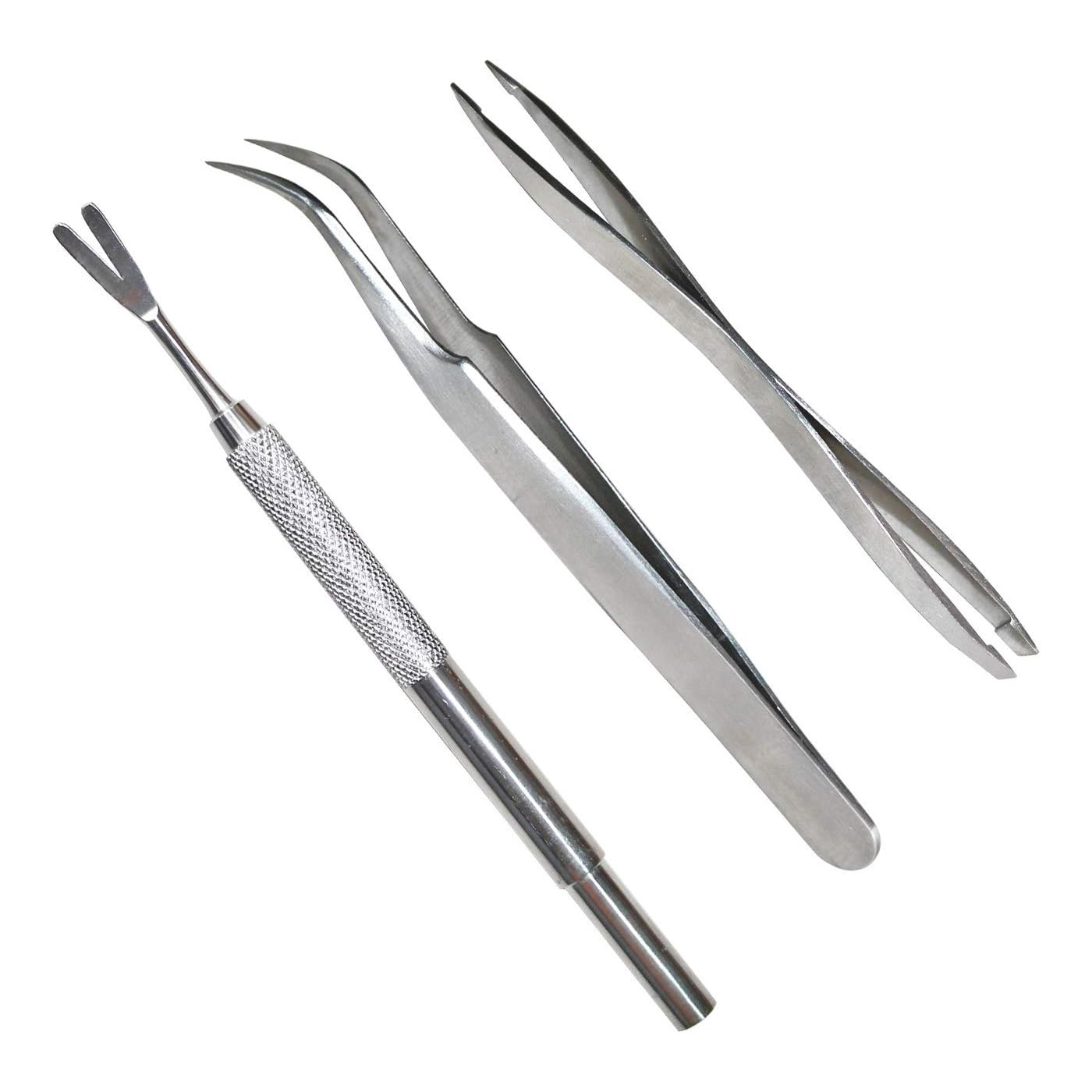
Tweezers can be useful for removing ticks, which is why we recommend this three-pack kit. Each tweezer is designed to remove ticks of different sizes. They can also be used to remove splinters, foxtails, or other foreign objects that may become embedded in your dog’s skin.
4. Scissors
- Our Pick: Utopia Care Medical Scissors
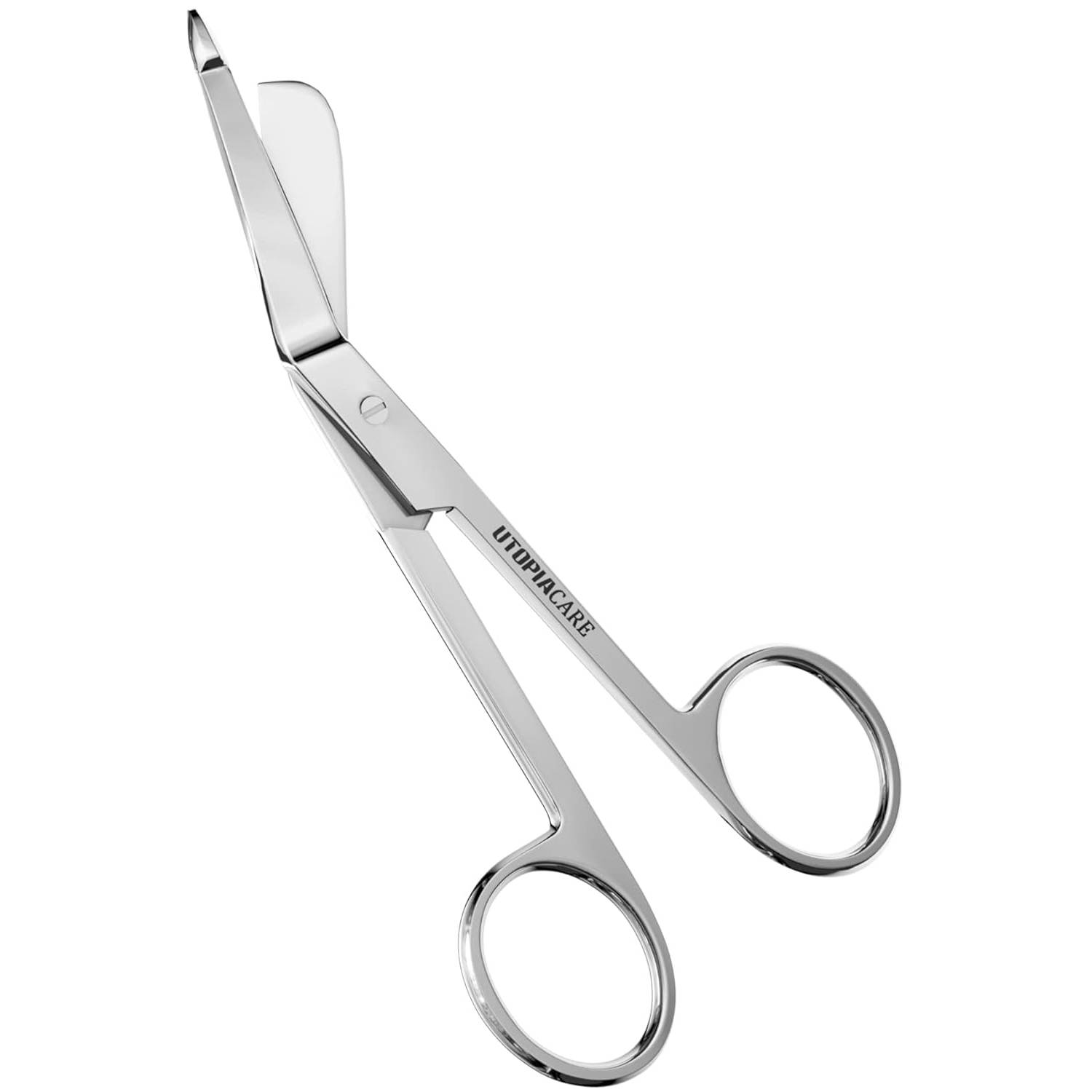
These medical scissors are angled and have blunted tips for safety purposes. They will assist in cutting any gauze or bandages to the appropriate size. Having a pair of scissors on hand may also simply prove useful in certain situations.
5. Magnifying Glass
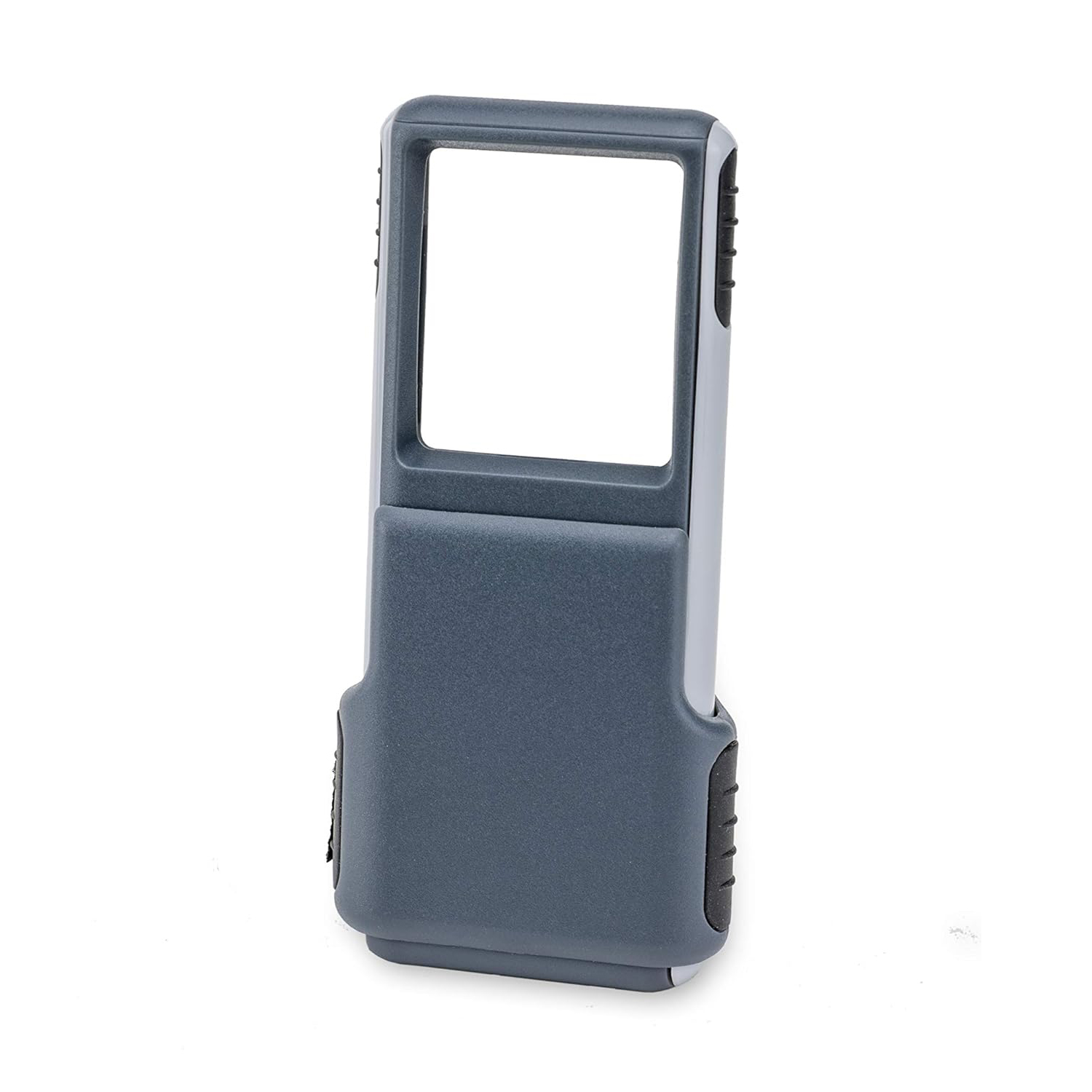
We liked this magnifying glass because it has LED lights, making it ideal for low-light situations. It’s also compact and lightweight and comes with a built-in protective sleeve that prevents scratches. This tool can be especially useful for removing small ticks and splinters and examining wounds.
6. Syringes
- Our Pick: Frienda Large Plastic Syringe 4 Pack
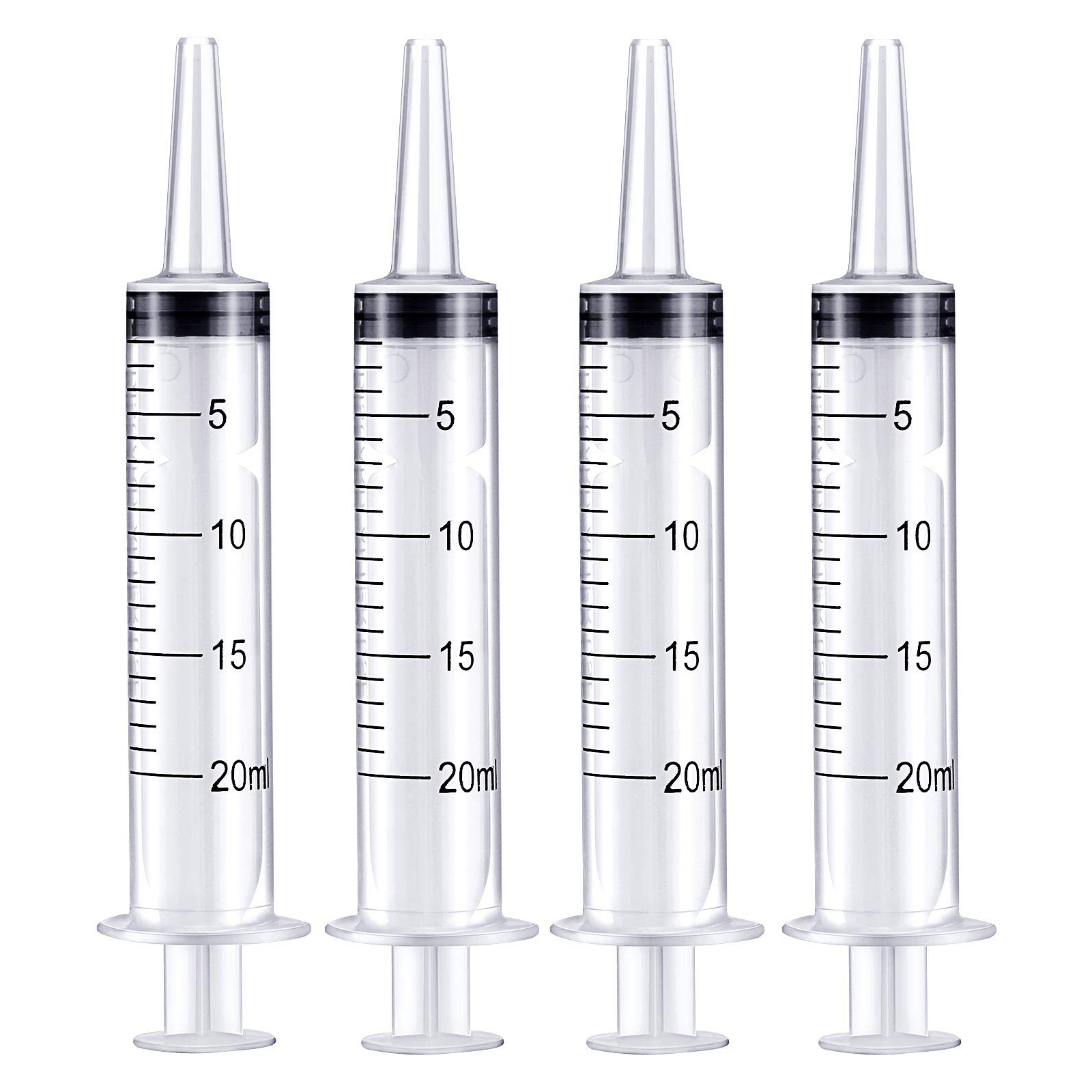
Eye droppers can be used to administer oral medications, but syringes are more versatile because they can also be used to flush wounds. These sterile 20-ml syringes can be used straight out of the packaging to draw up saline and flush wounds. Once used, they are no longer sterile but can be cleaned and kept for non-sterile purposes, such as administering oral medication or measuring liquid.
7. Thermometer
- Our Pick: iProven Dog & Cat Thermometer
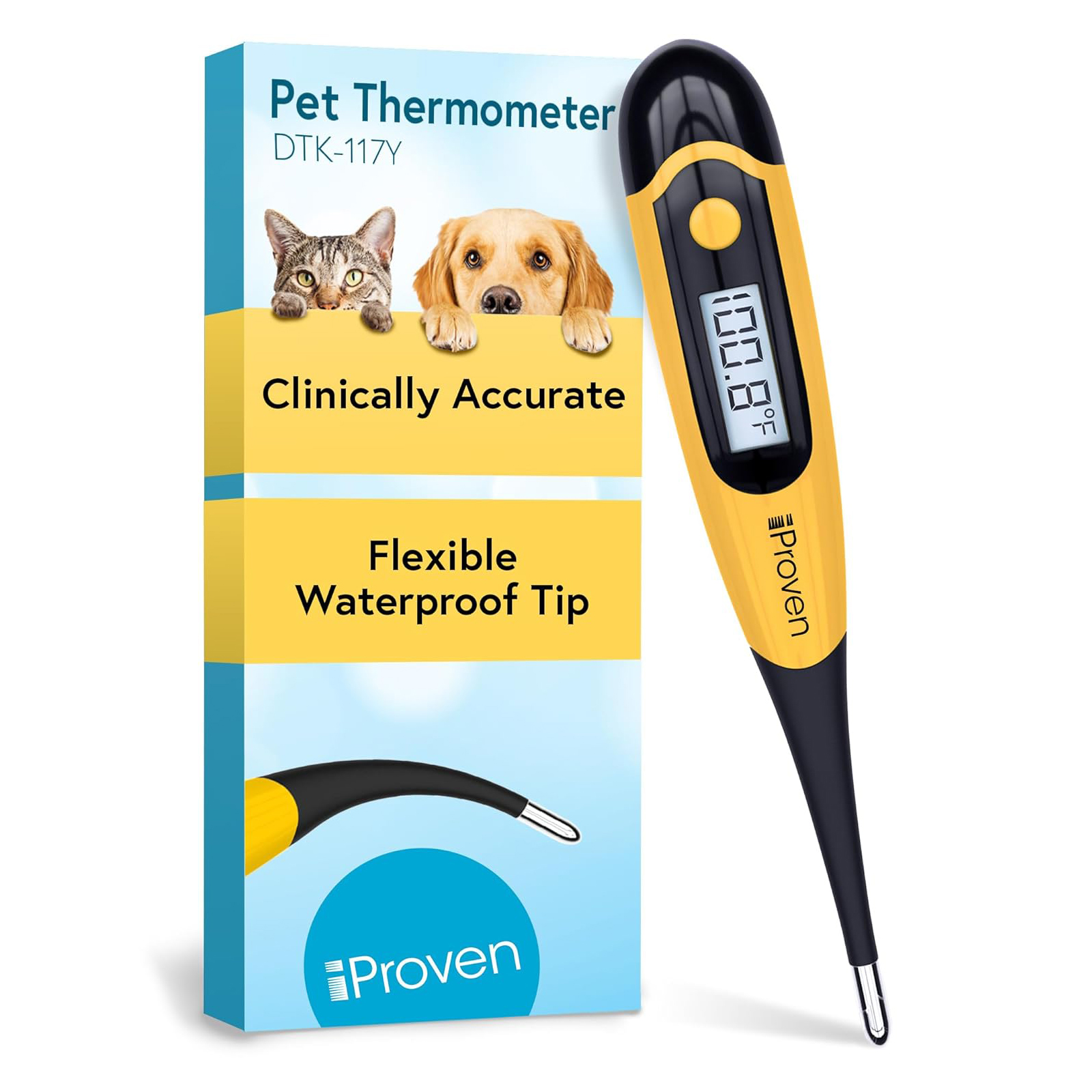
If you suspect that your pet is ill or may have a fever, a thermometer will let you know for certain. This model is specifically for pets, and its flexible tip should make the process more comfortable, as the most accurate method of taking a dog’s temperature is rectally. That said, don’t put yourself at risk of being bitten if you decide to attempt this. Place the thermometer tip in petroleum jelly, and gently insert it about 1–2 cm into your dog’s anus. Keep it there until the reading is complete, which should take about 20 seconds.
This thermometer is waterproof, so it’s easy to clean. If you are unable to do a rectal temperature, you can put the thermometer under your pet’s armpit, though this will be slightly less accurate. The normal body temperature for a dog is 101.0 to 102.5°F (38.3 to 39.2°C), but slightly lower can be normal in certain circumstances.
Blankets and Towels
8. Towel
- Our Pick: Frisco Microfiber Dog Bath Towel
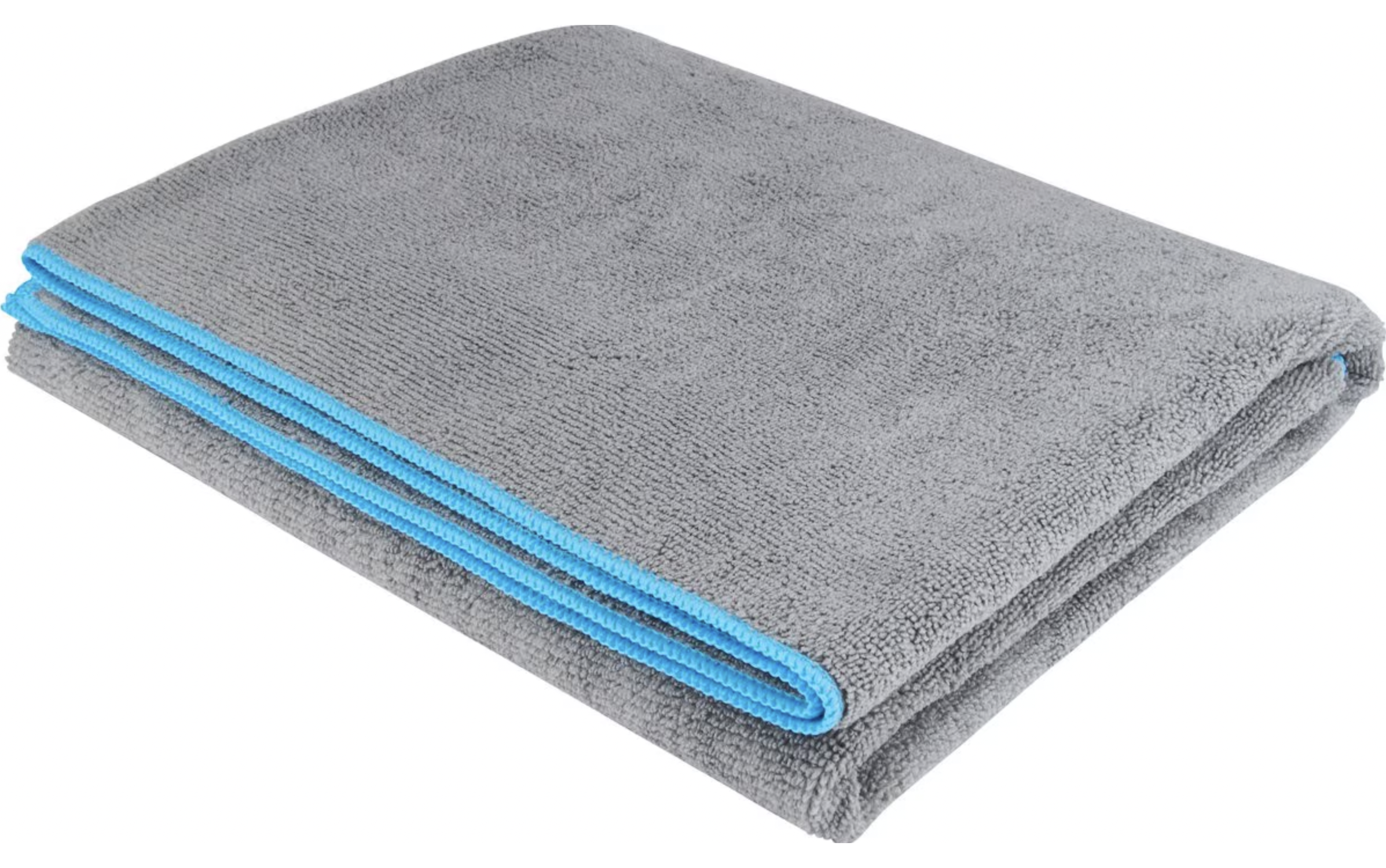
It’s a good idea to keep a blanket or towel handy in case of bad weather, as it can keep your dog warm and dry. If your pup is anxious, wrapping them in a soft blanket can calm them down, and if they’re hypothermic or in shock, a microfiber towel can be helpful. A wet towel can also be used to cool a dog experiencing heat stress or to stabilize a fractured leg.
9. Thermal Blanket
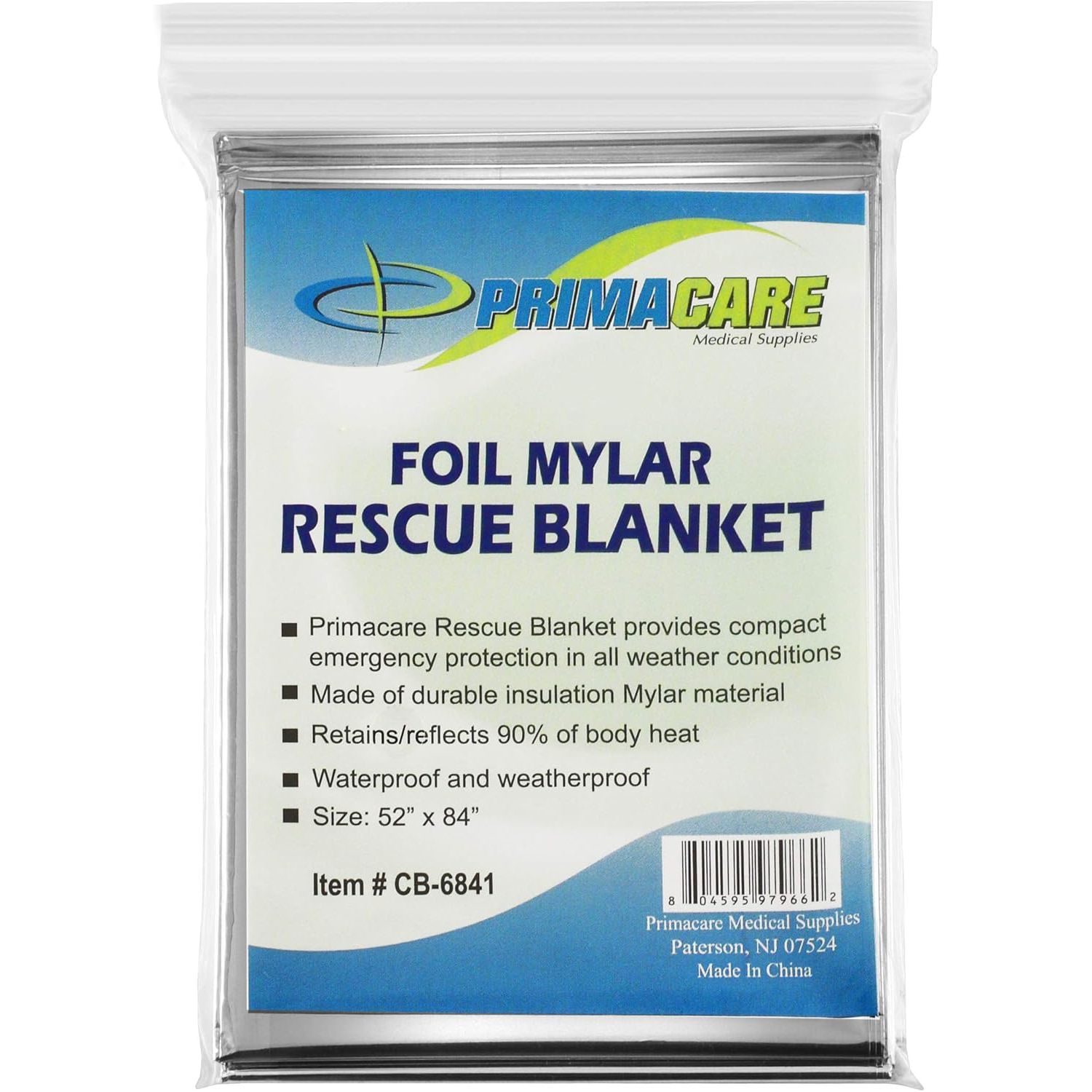
Thermal blankets can be used in most circumstances except when it is exceptionally hot or for dogs suffering from heatstroke. These are considered emergency blankets and can help keep an injured dog warm. They are lightweight and waterproof and will take up little space in a first-aid kit.

Wound Cleaning Supplies
10. Saline Solution
- Our Pick: Rite Aid Pharmacy Sterile Saline Wash Spray (or plain 0.9% sterile saline from your vet or pharmacy)
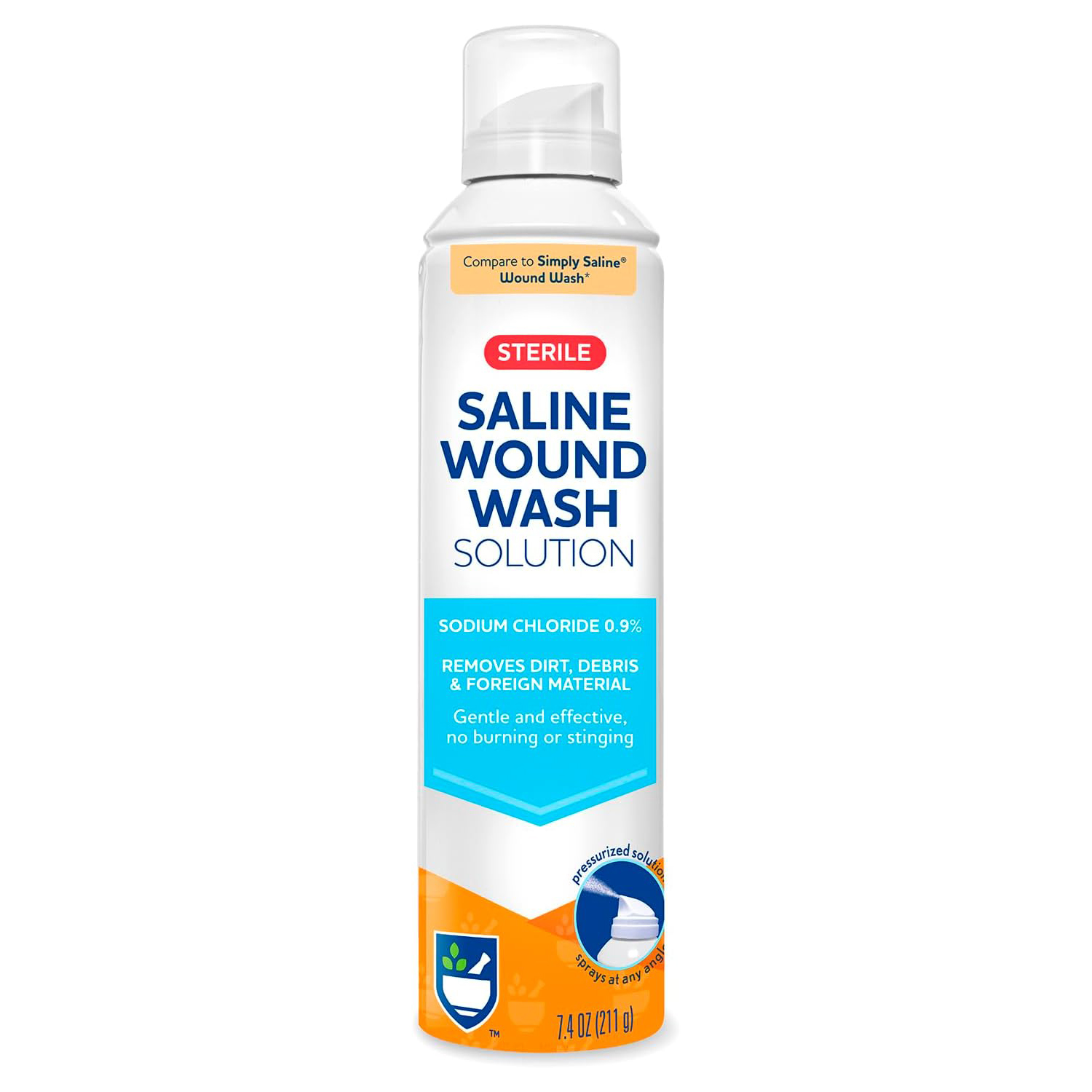
It is crucial to clean a wound before applying a bandage. The wound will likely have hair, dirt, sand, or other debris on it, and it should be rinsed thoroughly with a saline solution under moderate pressure. You can use plain water in a pinch, but sterile saline is isotonic and free of bacteria, making it a much better choice. Saline solution can also be used to flush the mouth or eyes if needed. This saline spray is good for wounds, but the pressurized delivery is not ideal for sensitive areas like the eyes and mouth. A bottle of plain 0.9% sterile saline is a great solution for all-around use, and we recommend contacting your local vet for a reliable brand.
11. Clippers
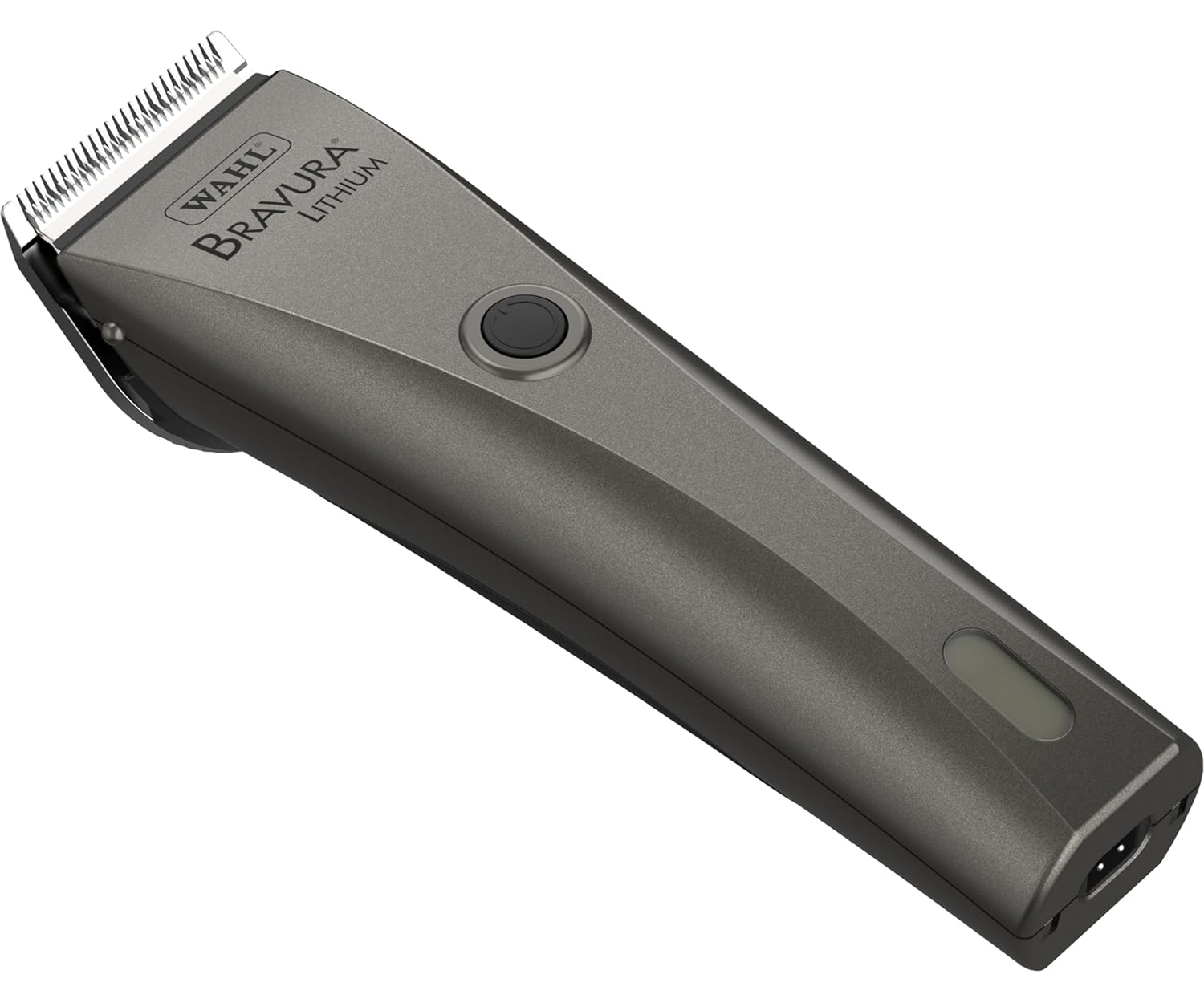
When your dog has an injury or wound, their coat can become matted with blood or obstruct the view of the injury. Being able to clip the hair around a wound can help you clean and assess it. When doing this, it is imperative that you don’t hurt your dog by touching the wound itself; rather, focus on the normal skin and hair around the wound. Desensitize your dog to the sound and feel of the clippers so they are more likely to tolerate clipping in an emergency situation. Take clipping slowly, and muzzle your dog for safety if necessary.

Wound Treatment
12. Antimicrobial Spray
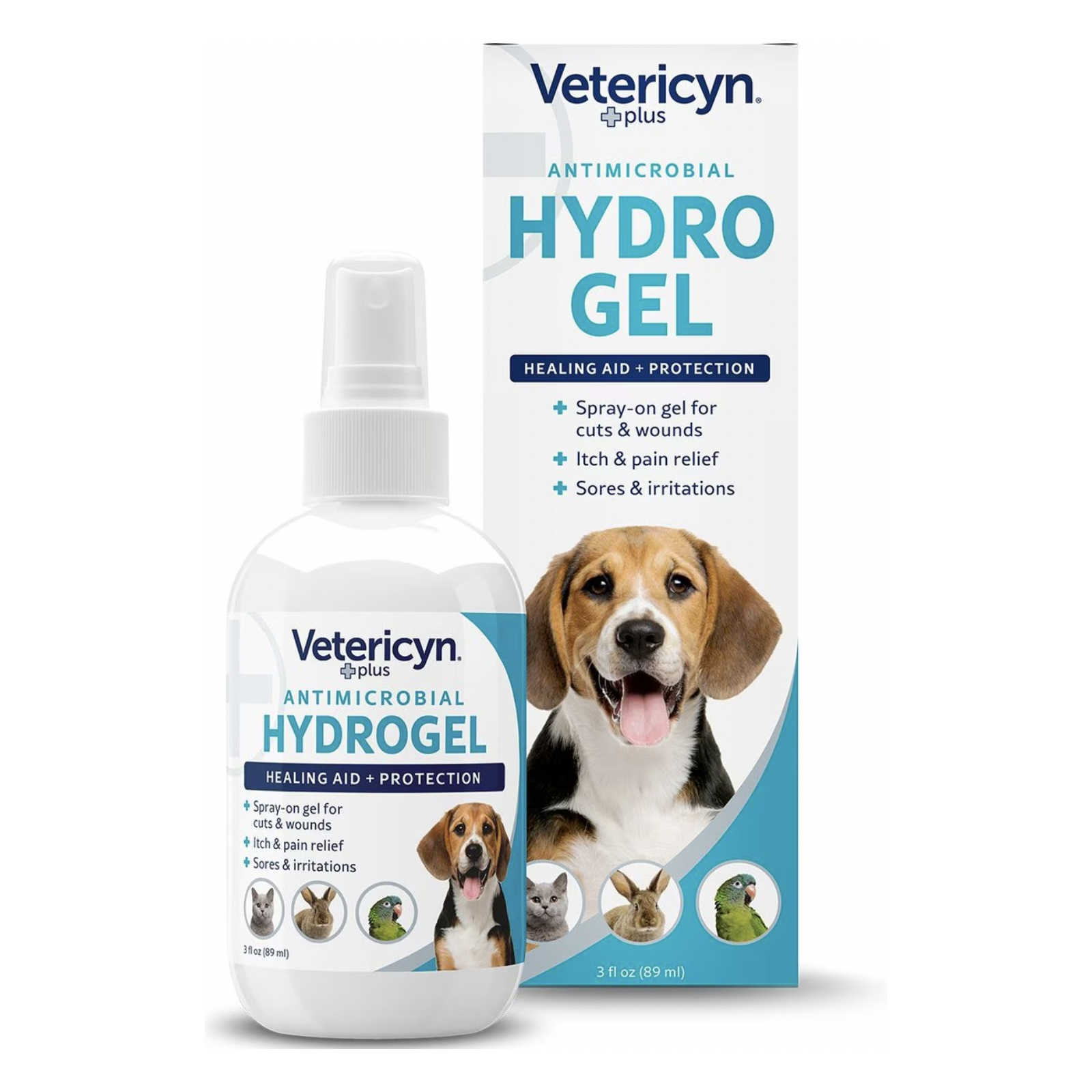
After a wound is cleaned, you have the option of spraying it with an antibiotic or antimicrobial solution. Vetericyn contains hypochlorous acid, which is an effective antibacterial when used after a saline flush. It can be used for various skin wounds, such as allergic hotspots and cuts. It is also helpful in promoting faster healing of the wound.
13. Styptic Powder
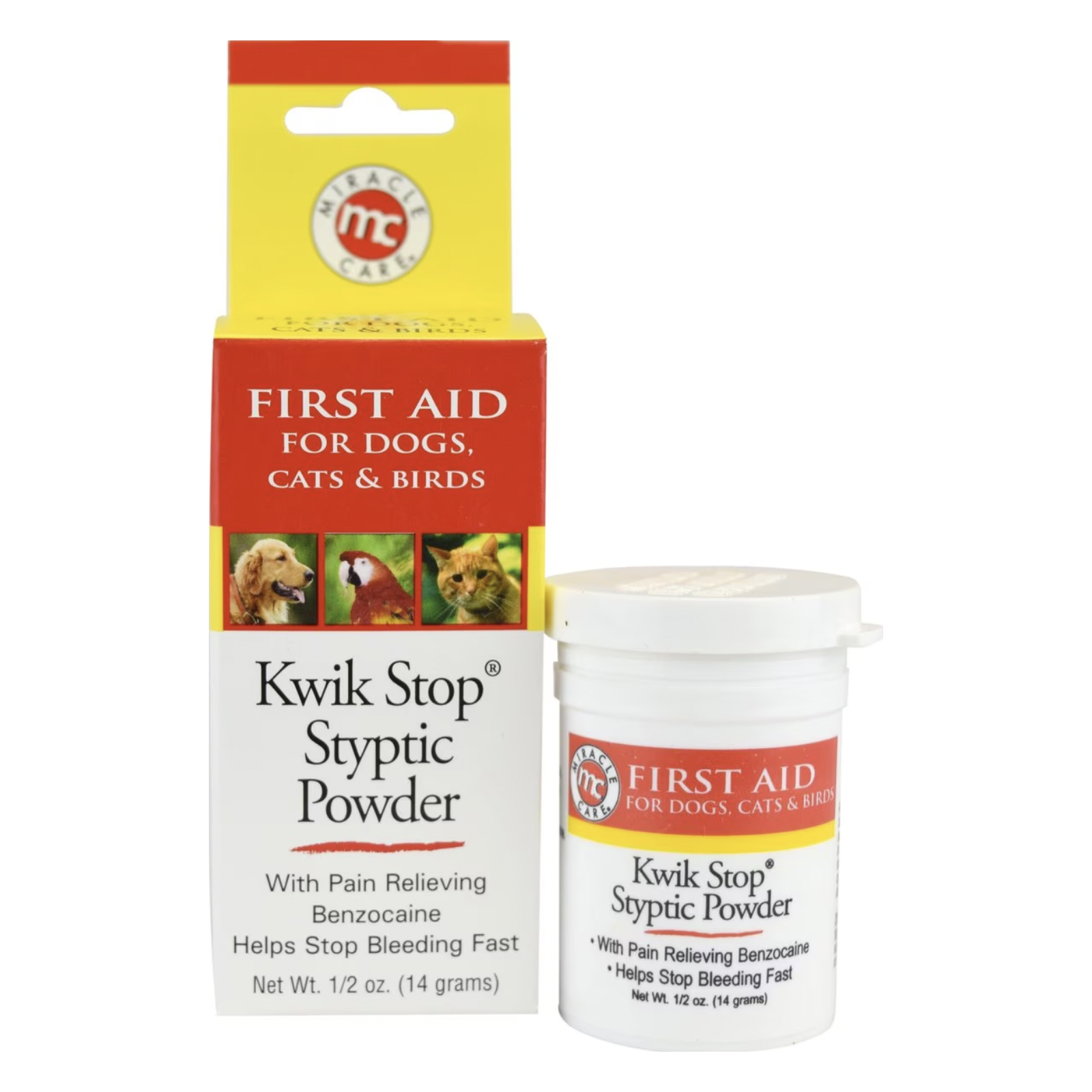
Styptic powder is a valuable supply to have when you own a dog. It helps stop bleeding, which is handy if you accidentally cut the quick while trimming your dog’s nails. It can also be used to help stop bleeding from minor superficial cuts. You can apply it using gauze, cotton balls, or even a spoon.
14. Cotton Balls
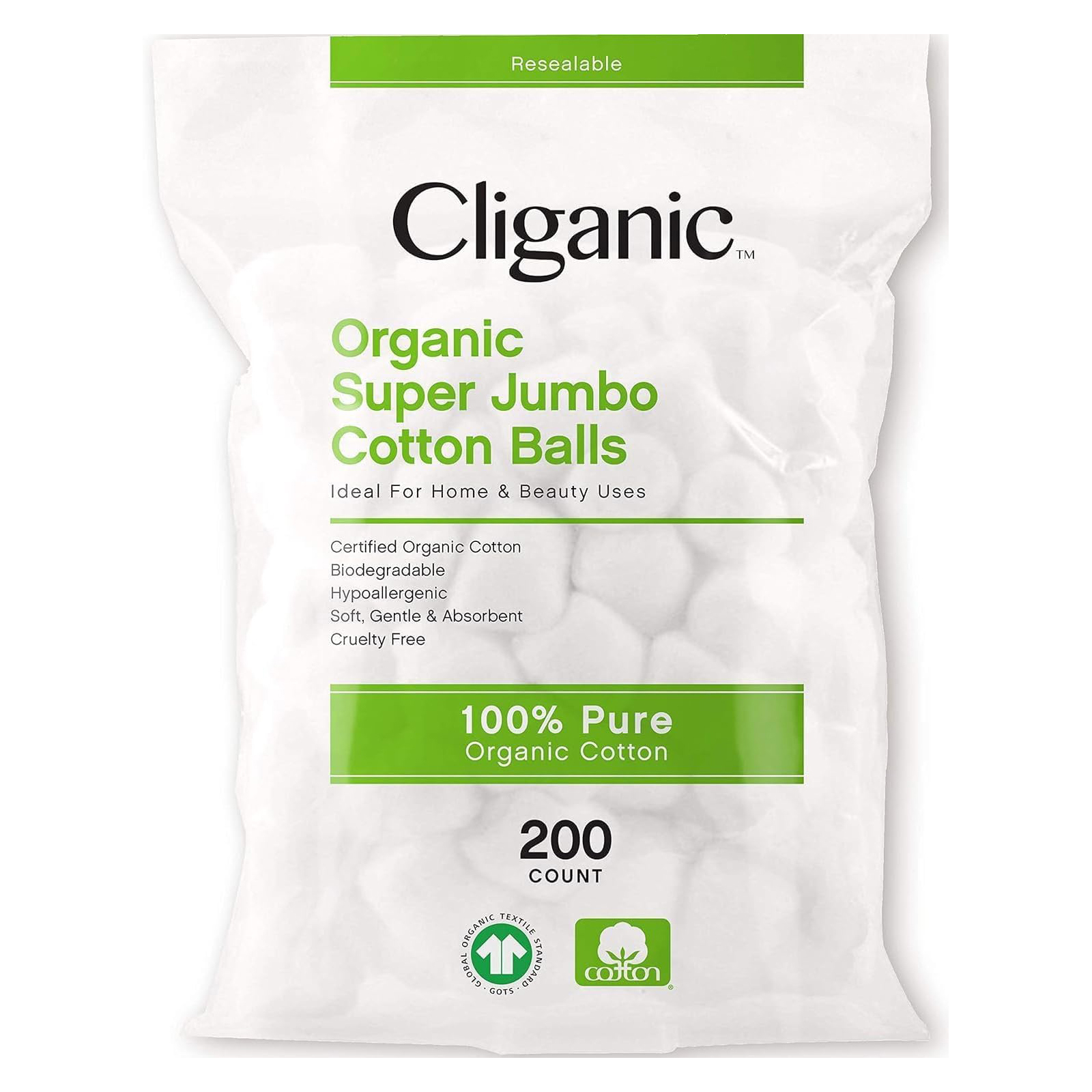
Cotton balls are ideal for applying topical medication, like antiseptics and creams, due to their soft texture. For cleaning cuts, though, we recommend using a gauze pad, as the fibers in the cotton balls can stick to the wound.

Hydration Supplies
15. Travel Bowl
- Our Pick: Frisco Silicone Collapsible Travel Bowl
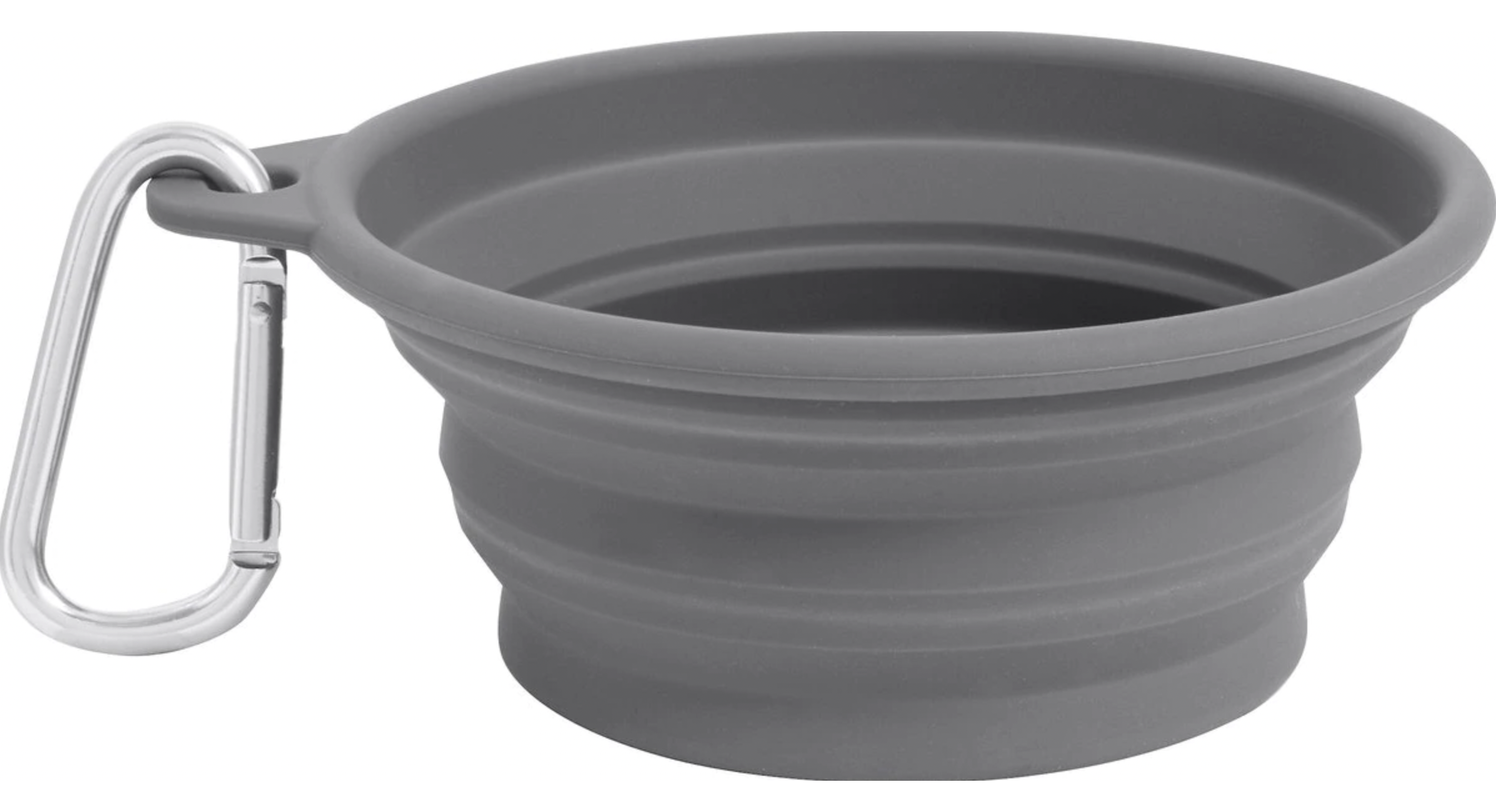
When you are traveling with your dog, remember to bring water and something for your pet to drink from. Dehydration is an emergency situation, so it’s better to be prepared! A traveling bowl is a great option because it can be folded flat and takes up less space than a traditional bowl. Don’t forget to pack enough water to keep your dog hydrated during the journey.

Cleaning Supplies
16. Pet Grooming Wipes
- Our Pick: Hepper Wash Wipes
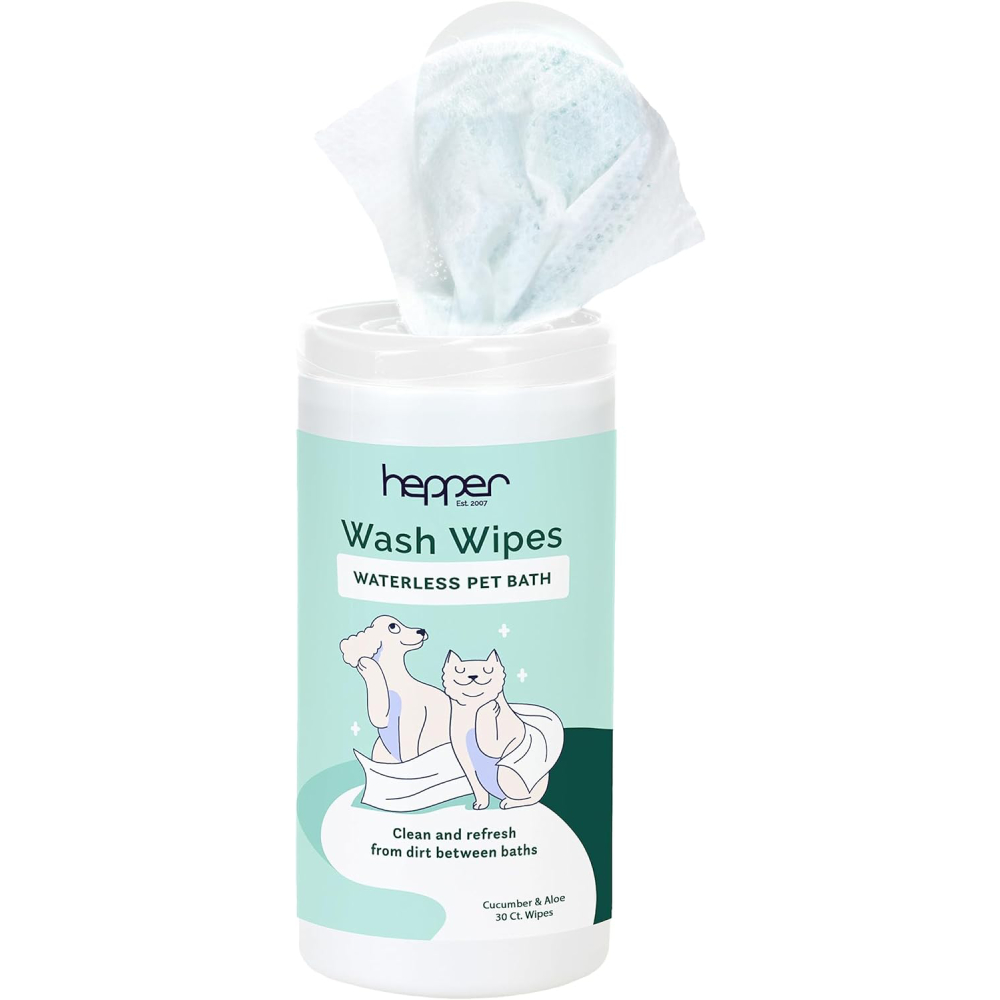
Grooming wipes are useful for cleaning your dog’s paws after a muddy walk. They can also come in handy for cleaning up blood or other fluids from your hands or your dog’s fur. These wipes are alcohol free and hypoallergenic and contain cucumber and aloe. Don’t use these grooming wipes directly on wounds, though, as they are not sterile or designed for wound care.
At Dogster, we’ve admired Hepper for many years and decided to take a controlling ownership interest so we could benefit from the outstanding designs of this cool pet company!

Safety Supplies
17. Muzzle
- Our Pick: Baskerville Ultra Dog Adjustable Muzzle
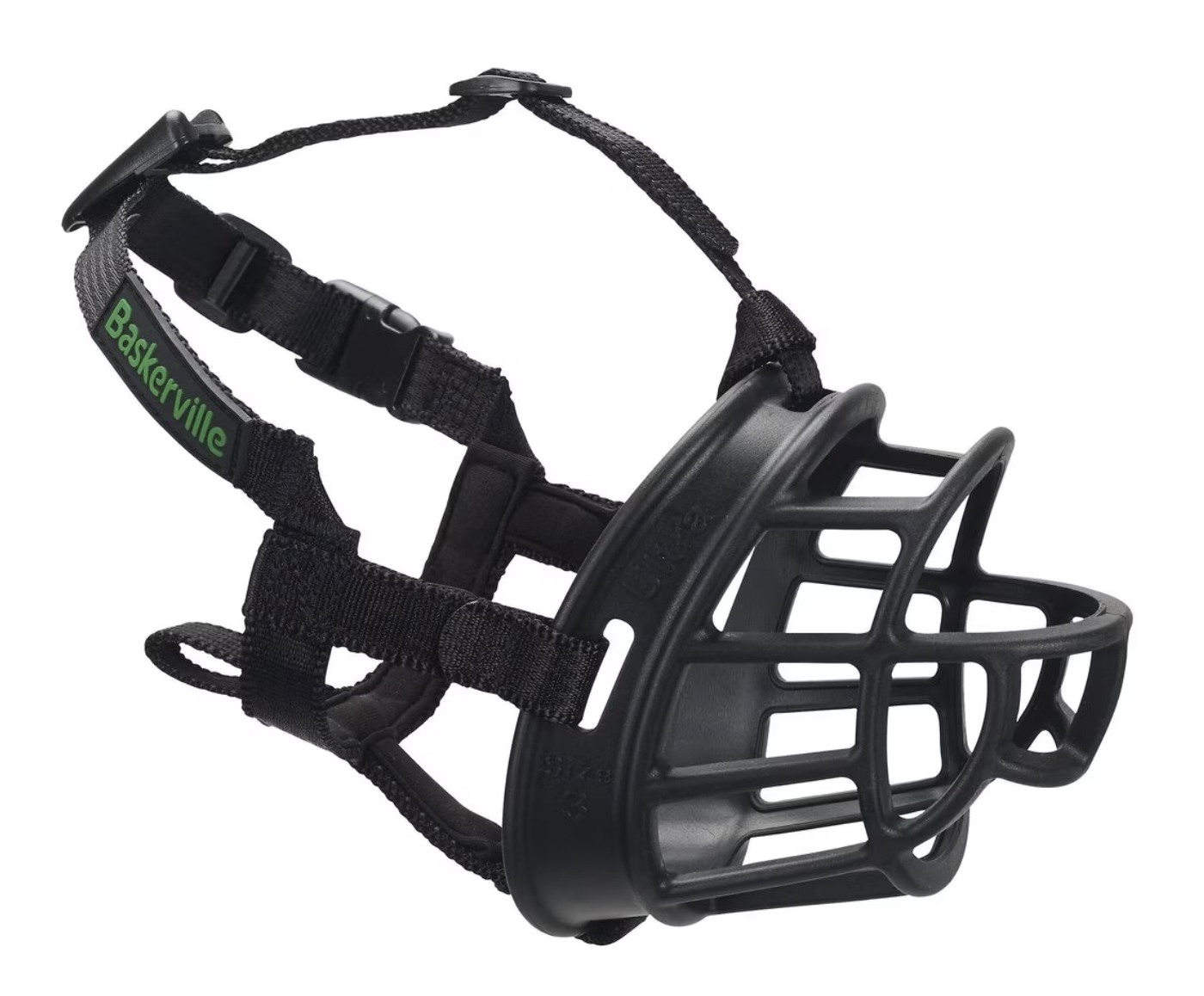
Even if you’ve never used a muzzle on your dog, if they are under extreme duress and pain, it might be necessary for your safety and that of anyone trying to help your pet. A basket muzzle, also known as a cage muzzle, will protect you but still enable your dog to pant and eat food if necessary. Set your dog up for success by training them to accept the muzzle before the emergency occurs. If you are going to use a muzzle, apply it immediately, ideally before your dog becomes stressed by your interventions.
18. Slip Leash
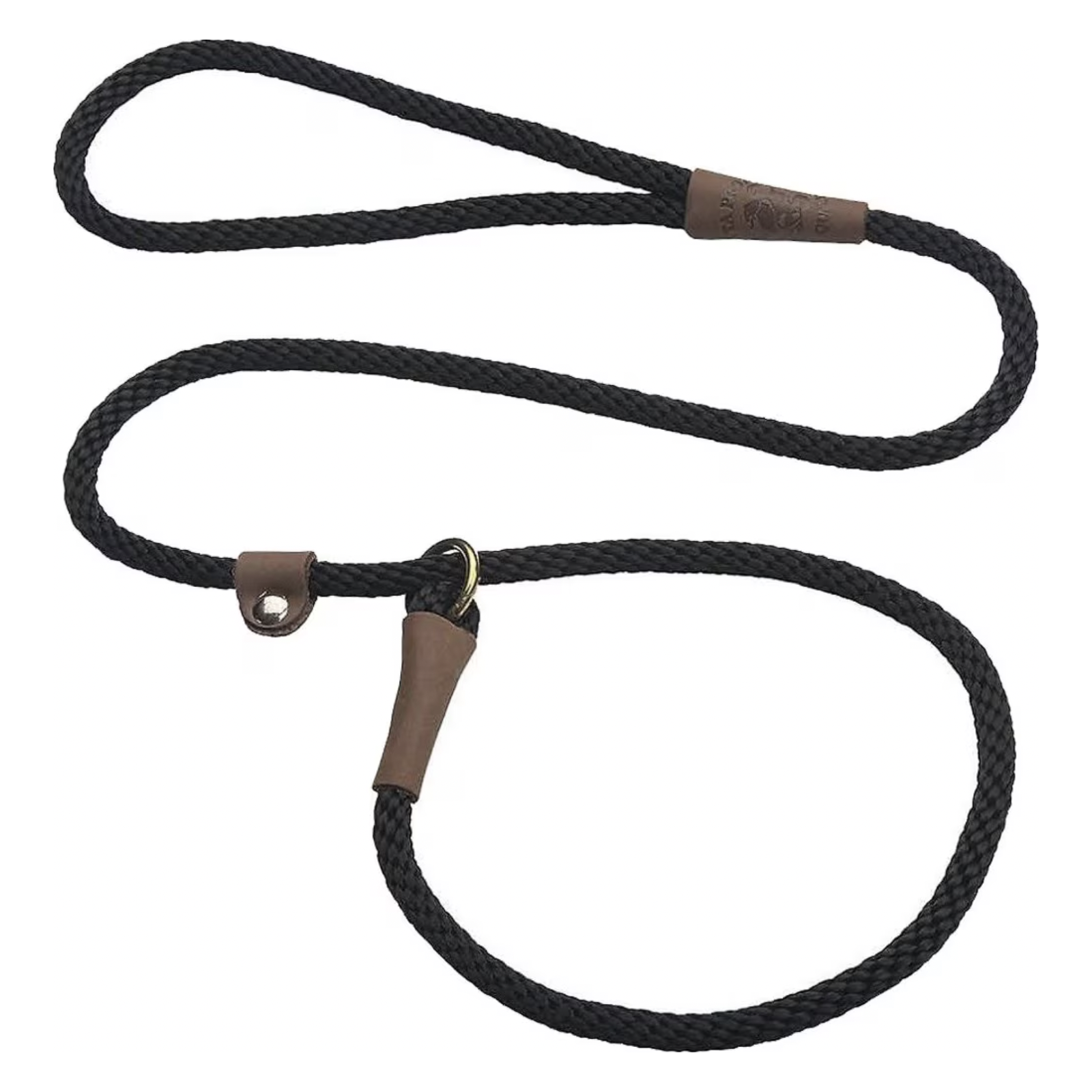
Having a slip leash can come in handy in case your dog’s collar or leash accidentally comes off or breaks. With it, you can quickly and easily secure your pet. While you could also carry a spare collar and leash, a slip leash is more convenient and faster to ensure your dog’s safety.
19. Disposable Gloves
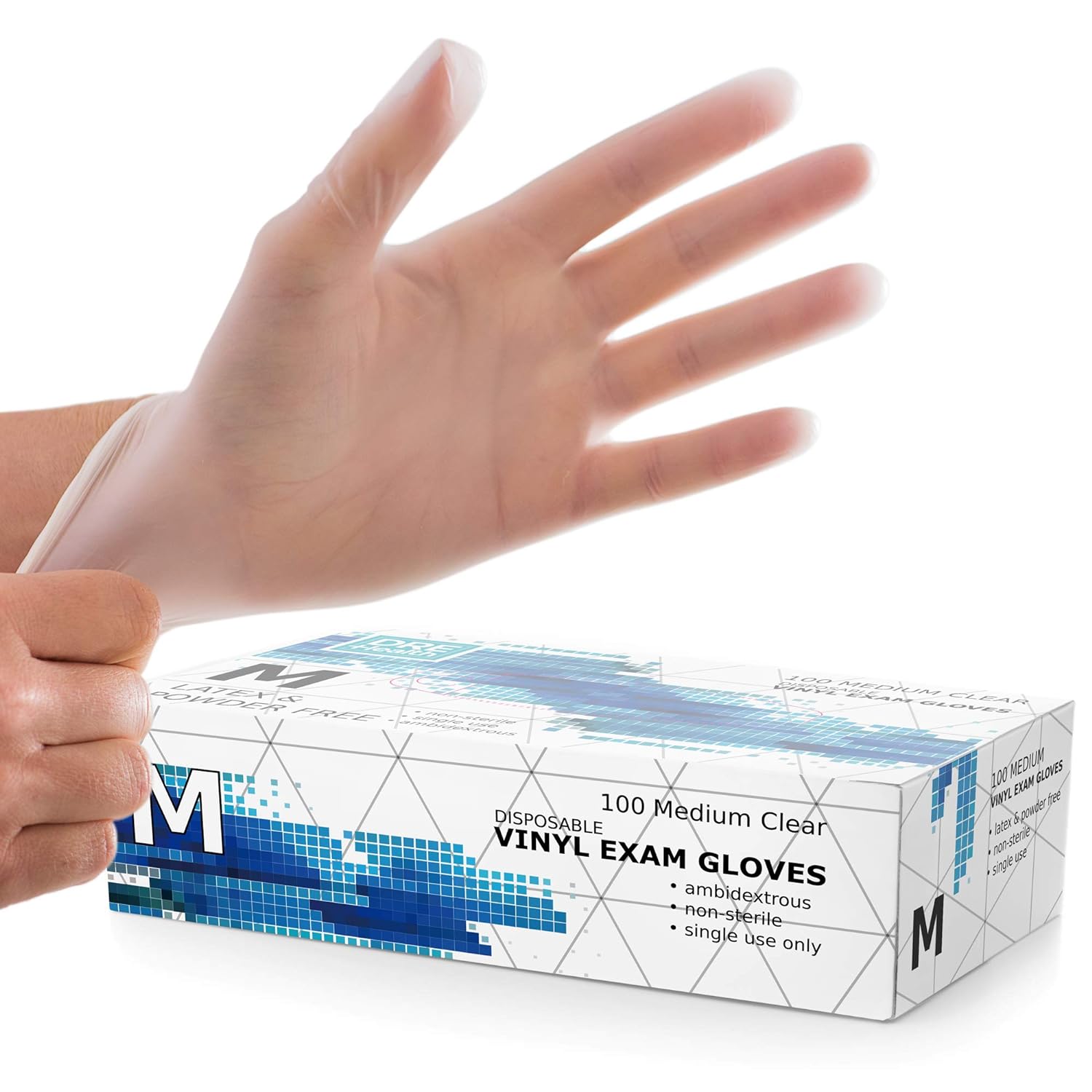
A few pairs of disposable gloves in your first-aid kit won’t take up much space and can help keep your hands clean while treating your dog’s wounds. These can also help protect your dog from any harmful bacteria that may be on your hands.

First-Aid Guide
20. First-Aid Guide
- Our Pick: Dog First Aid by the American Red Cross
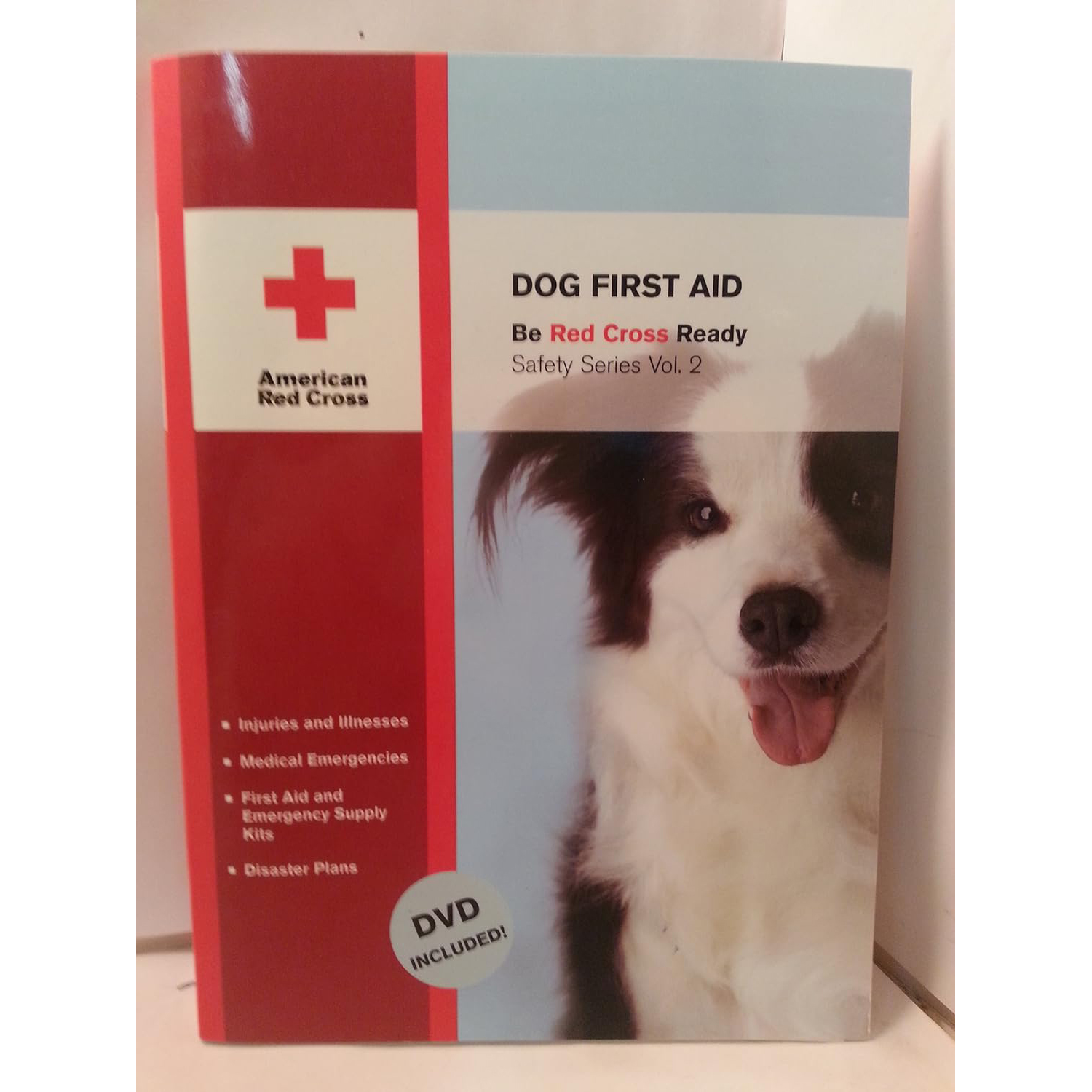
It is highly recommended that you bring along a first-aid guide when venturing outdoors with your dog. It will enable you to quickly access information in the event of an emergency, especially if you are in a remote location with limited access to medical assistance. While investing in a comprehensive guide with detailed information is advisable, if it’s too weighty in your kit, you can also opt for a compact book that focuses on more common emergencies.

Extra Considerations
When buying supplies for your first-aid kit, always consider the size of your dog. You won’t want to buy small bandage wraps for a Great Dane or large bandages for a Shih Tzu.
Depending on your activity and destination, you can create one large kit or a few smaller kits. You should also have your dog’s documentation, such as vaccination and medical records, along with emergency phone numbers, including your own. It’s a good idea to have printed copies of these documents in your kit in case you don’t have access to your phone or internet connection.
You’ll also need a waterproof bag to store everything in, such as a colorful and eye-catching bag that is easy to identify, though Zip-Loc bags are inexpensive and enable you to see what’s inside. Also, consider bringing along extra treats for your dog when you’re out and about.
A Note on Hydrogen Peroxide and Vomiting Induction
Some veterinarians will sometimes recommend the induction of vomiting at home using a 3% hydrogen peroxide solution, so this may be appropriate to include in your first-aid kit. However, not all cases of dietary indiscretion will warrant vomiting, and in some cases, it can lead to further injury. Vomiting under the control of a vet is a much safer choice, and in most cases, owners will be able to reach a veterinarian in time for them to induce vomiting. The inclusion of 3% hydrogen peroxide in your first-aid kit is ultimately a personal choice, but be aware that its use must be under the guidance of a veterinarian and based on your individual circumstances.

Conclusion
You can easily purchase a premade first-aid kit online, which will likely contain many items recommended here. But creating your own will enable you to be more familiar and comfortable with everything inside. Don’t forget to pick up a waterproof enclosed bag to put it all in!
Also, if your dog is on any medication, ensure that you bring it with you on any outings. Hopefully, you’ll never need to use your first-aid kit, but at least you’ll be well-prepared if the unimaginable happens.
Featured Image Credit: Pixel-Shot, Shutterstock
